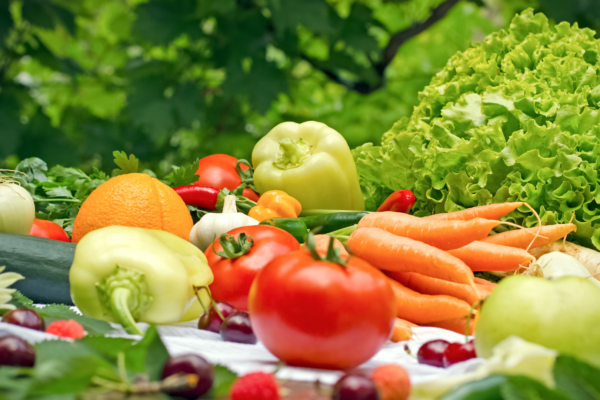
For more sustainability and lower costs: What measures can be taken to reduce food waste in gastronomy?
By Foodways
A lot of food is still wasted in gastronomy. According to WWF Switzerland, restaurants are directly responsible for 12% of total food waste. Processing accounts for 30% and agriculture for 11% – areas that gastronomy can also influence through targeted purchasing and other measures. Appropriate measures that help reduce food waste from field to plate are therefore enormously effective. In the following article, we explain how they can be implemented and what is important.
The most important factor: Strengthening employee engagement.
Studies found that kitchen and service staff often want to help reduce food waste, but need more guidance. This orientation can take the form of daily staff meetings, informal conversations or peer learning opportunities, for example. Targeted workshops and training also ensure that staff are aware of food waste issues and feel empowered to implement effective measures on their own. Such workshops also ensure greater understanding with regard to food waste. In addition, they strengthen initiative and the feeling of self-efficacy. This is because employees learn how they can make a concrete contribution to reducing food waste. At Foodways, for example, we offer the e-learning module for gastronomy.
In any case, restaurant management must make it clear that employees are not responsible for food waste. Rather, restaurant management should take responsibility for it and provide universal guidelines.
After all, if team members fear being held accountable for food waste instead of being rewarded for reducing food waste, engagement will almost certainly drop. That would be a shame. After all, another study found that the most creative ideas for reducing waste in the kitchen often came from the kitchen staff themselves, rather than from management or leadership.
Managers should therefore encourage kitchen staff to develop effective and innovative waste reduction strategies and promote collaboration within the restaurant, such as through pilot programs across all facilities. Managers can also create food waste reduction incentive programs to encourage desired behavior change and employee engagement.
What practices can be used to prevent food waste in gastronomy?
Restaurant managers have a variety of options to reduce food waste costs. For example, it makes sense to develop a process for measuring food waste.
This includes, for example, regular checks, on food loss and spoilage. This is because it is possible to determine exactly how much and where food is being lost and wasted. This information reveals opportunities to reduce food waste right where it happens. The data also helps develop and implement appropriate strategies.
Time-based targets
Another, for example, may be to set time-based food loss and waste reduction goals that encourage action. This is because such time-bound and concretely measurable goals can raise awareness among the entire team, focus attention on reducing food waste, and encourage the mobilization of resources that will help prevent food waste altogether. These goals can also be helpful for restaurant chains, as they can be implemented at all locations.
Anticipate food ordering.
Ideally, restaurants should have a manual or digital system in place to accurately analyze food orders. This is because it gives them more accurate data and a better understanding of food ordering patterns. Such a system also allows for better control over kitchen processes, which ultimately leads to less waste. Artificial intelligence is an important factor here, as it can help predict food orders based on collected data.
Weight-based pricing structure and concrete quantity determination
A weight-based pricing system for food waste can also help reduce them. After all, if every extra gram costs something, customers will automatically order smaller portions. Weight-based systems are very accurate, but require a lot of effort on the part of staff and management – as well as space in the kitchen.
But having a process in place to specifically quantify food waste helps determine how much and where food is being wasted. This strategy can help identify critical areas and track progress against food waste over time.
Small portion sizes
One effective way to reduce food waste is for restaurants to serve smaller portions by default and offer larger portions only as an add-on. In this way, customers with fewer cravings can order a smaller meal and usually leave less overall, reducing both the direct cost of preparation and the hidden cost of food waste to the restaurant. This can also be a relatively easy adjustment for many restaurants, since they already offer children’s menus anyway and preparation is already standard.
Another option is to review what type of food is left on plates and in what quantities. This analysis allows restaurant owners to make appropriate adjustments and thus reduce food waste in a very targeted way. Perhaps the garnish can be saved – or an unpopular component in the mixed salad. You can also reduce the size of plates to adjust portions. In order to reduce the amount of food and thus adapt it to actual needs, smaller plates and cups can also be purchased, which automatically reduces the size of the dishes. Small plates also make the portions look larger, so that customers do not misinterpret the smaller portion sizes and remain loyal to the restaurant.
Avoiding food waste during storage and preparation
Restaurants that set out to find food waste in their own operations need concrete ways to determine how much food is actually being wasted and where that waste is coming from. Targeted data collected can help restaurants track food orders placed by customers at the restaurant, making it easier to determine how much food waste has occurred with each order. This helps in setting up modified menu plans and preparing dishes that are customized in size and taste to suit the clientele.
Food waste also occurs when food is stored. New produce is often purchased and existing produce is overlooked and sometimes spoils. Restaurants can identify this type of food waste using the first-in, first-out inventory method. This is because food that is not found spoils more easily. That’s why it makes sense to place goods with shorter expiration dates at the front of the shelves and refrigerators. New goods always automatically move to the very back. This ensures that no spoiled goods are hiding. This method is an easy way to ensure that outdated food is used before it spoils.
Food preparation is another area where waste often occurs. After all, if large quantities of food are prepared, peeled and cut every day without actually being used, this also inevitably leads to food waste. To prevent this from happening, it is helpful to be able to predict how many orders are likely to be received. It can be quite difficult to accurately forecast this demand using manual methods.
But collected customer data can reveal patterns to determine actual daily consumption and what food is needed. This can also help identify seasonal variations and preferences and adjust the menu accordingly. After all, customers may prefer different portion sizes and flavors in the summer than in the winter. This allows kitchen staff to make more targeted decisions about which products need to be prepared for daily use.
Measures to reduce food waste: An opportunity for gastronomy
Restaurants have great influence in preventing food waste. Fortunately, there are now a lot of proven measures as well as new technologies that can help. Because food waste is a serious problem. Not only does it cost a lot of money, but it also contributes significantly to greenhouse gas emissions. That’s why gastronomy businesses would do well to actively tackle the problem of food waste. In this way, businesses can show that they are acting sustainably and at the same time reduce operating costs.
Foodways







